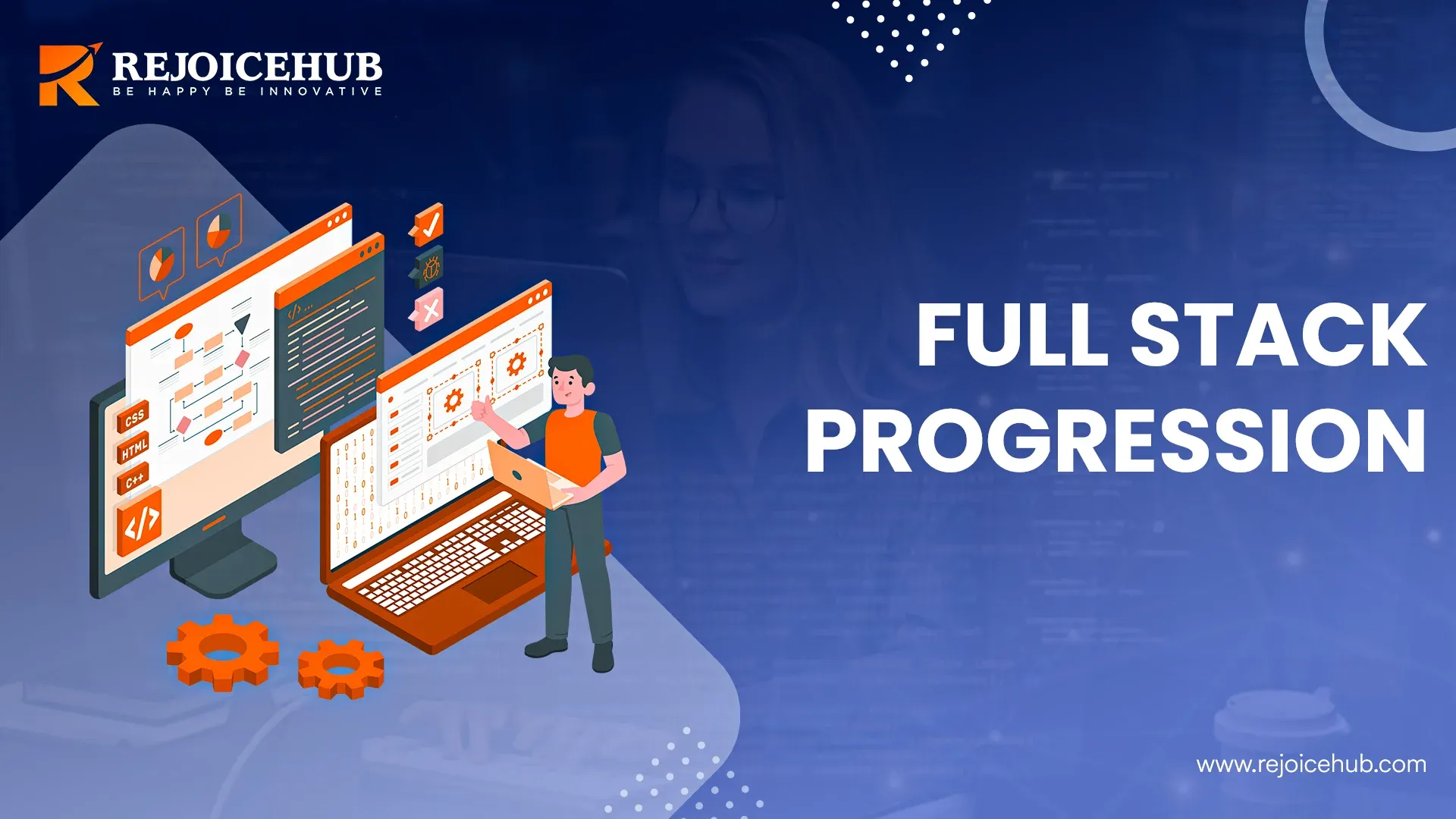
Unveiling The Power Of Fullstack Progression: How It Empowers Developers
As technology evolves and industries get more interconnected the work of developers is becoming more critical than ever. With the growing complexity of software applications and the necessity of having seamless integration across many platforms, developers are always looking for ways to broaden their skills and stay on top of things. Fullstack progression is one such way; it means having the ability to work on both the frontend and backend of an application. In this blog we will look into fullstack progression and how it enables developers to achieve excellence in their careers.
What Is Fullstack Progression And Why Is It Important For Developers?
Fullstack development, as the term implies, is the growth of skills in both frontend and backend technologies. Developers were previously confined to work on either the user interface part (frontend) or the underlying infrastructure (backend). Fullstack progression breaks these barriers so that developers can comprehend the whole application development process right from designing a user interface to handling server-side operations. The fact that an employee is able to work on both sides of an application is vital for many reasons.
Firstly, it helps to make developers more efficient and productive, as they can move smoothly between frontend and backend tasks based on the needs of the project. This flexibility not only makes development processes faster but also reduces dependency on multiple team members which results in quicker turnaround time and higher productivity. Moreover, fullstack growth makes developers have a more profound comprehension of the entire application architecture.
By acquiring practical skills in the frontend as well as backend technologies, developers may recognize probable chokepoints or optimization chances and thus have more resilient and scalable applications. Such level of expertise also allows developers to interact efficiently with different stakeholders such as designers, product managers and other developers leading to a smoother development process and higher quality end product.
The Benefits Of Fullstack Progression For Developers
Fullstack developers who undergo this kind of progression can enjoy a lot of benefits which help them in their professional development and career. One major benefit is the growing marketability of fullstack developers. As companies continue to move towards fullstack development, the demand for developers who can easily handle both frontend and backend development is on the increase. By having fullstack skills, the developers can find jobs across a wide range of industries and be able to secure high paying positions in the industry. In addition, fullstack progression provides developers with a wider skill set which makes them flexible enough to work on different projects and technologies.
The skill of understanding and working with different frontend frameworks (e.g. React or Angular) and backend technologies like Node.js or Django allows developers to be multi-talented and to deal with a broader spectrum of projects. This adaptability not only increases the value of the developers in their organizations but also makes them more self-assured in assuming new tasks and learning new technologies. One more benefit of fullstack development is the possibility of professional growth. Through diversifying their skill set and assuming a wider range of responsibilities, developers have a chance to grow both horizontally and vertically in their career.
On a horizontal level, developers can play different roles in their organization, for example a technical lead or a solution architect, where they use their fullstack skills to help and mentor other developers. On the vertical level, developers may pursue leadership positions or even start their own businesses, which require them to take responsibility for the entire development process.
How Fullstack Progression Empowers Developers To Work On Both Frontend And Backend
Fullstack progression imparts developers with the requisite skills and knowledge, thus allowing them to work on both frontend and backend technologies. For fullstack development mastery, developers are required to acquaint themselves with a plethora of frameworks, libraries, and languages that are used in both frontend and backend development. In the area of front-end development, developers have to be proficient in HTML, CSS and JavaScript which are the basics of web application. They should also be well-versed in popular front-end frameworks such as React, Angular or Vue.js, understand topics like responsive design and user experience optimization.
These abilities empower developers to craft UIs that are visually compelling and user-friendly, which in turn improves the overall user experience. On the back-end side, developers should be able to understand server-side programming languages like Python, JavaScript (Node.js), Ruby, or Java.
They must also become experts in databases like MySQL or MongoDB and be familiar with the concepts of RESTful APIs, authentication, and security. This knowledge equips developers to deal with data storage, retrieval, and processing aspects of an application as well as ensuring its smooth running. With these skills under their belt, developers can perform both frontend and backend tasks thus closing the gap between design and functionality. Such a deep understanding of the entire application stack makes it possible for developers to provide reliable and efficient solutions that cater for both user and business needs.
The Skills And Technologies Required For Fullstack Progression
In order to start on the path of fullstack progression, developers will need to pick up a certain set of skills and acquaint themselves with the appropriate technologies. Below are some of the key skills and technologies required for fullstack development:

1. HTML, CSS, and JavaScript
These are the foundational languages of the web and they are what every frontend development is based on. Developers must be familiar with HTML and CSS in order to create the structure and style of web pages, as well as JavaScript for adding interactivity and functionality.
2. Frontend Frameworks
Developers should have used the popular frontend frameworks like React, Angular, or Vue.js. These frameworks give an effective way of building complex user interfaces and managing state within an application.
3. Server-side Programming Languages
Full-stack developers need to have a good command of at least one server-side programming language such as Python, JavaScript (Node.js), Ruby or Java. These languages help developers in dealing with server-side logic and databases.
4. Database Management
Developers require to be knowledgeable about databases and their design, querying, and maintenance. The use of SQL-based databases such as MySQL or PostgreSQL and NoSQL databases like MongoDB or Firebase is a must.
5. Web Servers and Deployment
A fullstack developer should have the skill to deploy applications to web servers and manage deployment process. Knowledge of tools like Apache, Nginx, or AWS (Amazon Web Services) is vital for a hassle-free operation of web applications.
6. Version Control Systems
For a full stack developer, expertise in version control systems such as Git is essential. It gives them the opportunity to manage and track changes in code, collaborate with other team members, and revert to previous versions if necessary.
7. API Development
For a full stack developer, knowing how to design and develop RESTful APIs is of great importance. This allows them to create interfaces that are used in different parts of an application to communicate and exchange data.
It is worth mentioning that the development of these skills is vital yet it should be noted that fullstack progression is a continuous process. Technologies and frameworks are evolving at a fast pace and developers must always be updated with the latest trends and best practices. Continuous learning and a growth mindset are the key to success in the fast-growing field of fullstack development.
The Future Of Fullstack Progression And Its Impact On Developers And The Industry
With the fast growth of technology, it is anticipated that there will be a very big demand for full stack developers in the next few years. There is an increasing value of the skill to work flawlessly across the whole application stack that is sort after by organisations that are looking to improve on their efficiency and agility in their development processes. Fullstack developers who have skills in both frontend and backend technologies have a competitive advantage in the job market and are able to negotiate higher salaries.
Furthermore, fullstack development makes it possible for developers to handle even more difficult and complex projects. Through understanding the entire development process, developers can make a more holistic contribution to the design, architecture and implementation of applications in a more complete and efficient manner. This level of expertise and influence not only does increase job satisfaction but also gives rise to leadership and management positions within organizations. Alongside individual empowerment, fullstack progression has broader implications on the industry as a whole.
It helps to facilitate cross-functional collaboration and knowledge sharing among the team members, as full stack developers possess a profound comprehension of various elements of the development process. This multidisciplinary approach improves the overall communication and synergy in development teams, which results in better quality products and smoother workflows. Fullstack progression may be even more crucial in the near future. The increase of microservices, cloud computing, and new technologies like AI and ML requires a holistic understanding of entire technology stack. Fullstack developers that are able to steer through these complicated landscapes and seamlessly integrate different parts will be highly sought after.
Conclusion
Fullstack advancement benefits developers by arming them with a holistic skill set to work on both frontend and backend technologies. It makes them more marketable, fosters their professional growth, and enables them to handle a variety of projects. As the industry continues to transform, fullstack developers that adopt this progression will have the upper hand and will be very successful. By constantly broadening their knowledge and keeping abreast with the newest trends and technologies, fullstack developers can effectively harness their capabilities for great influence in the software development world.
